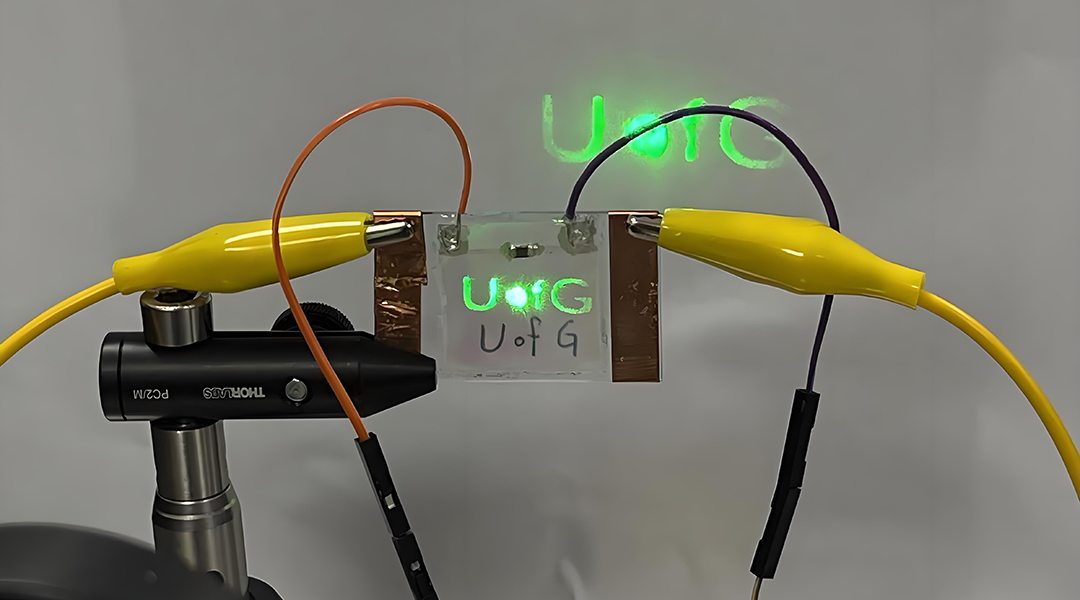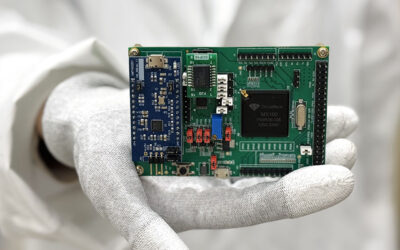An innovative device inserted into head-mounted displays could improve the switching between different forms of extended reality (XR) using temperature as a control mechanism to grant users a smoother experience.
Extended reality technology has expanded in use and sophistication over the last decade, building upon the experience that traditional displays give users. However, for this technology to fully achieve its potential, improvements must be made to the next generation of head-mounted displays.
“Improving head-mounted displays is important because these devices are at the forefront of immersive technology, enhancing user interaction with digital content,” said Rami Ghannam, a scientist at the University of Glasgow’s James Watt School of Engineering.
“Better head-mounted displays can provide more realistic and engaging experiences, which is crucial for applications in gaming, simulation, training, and many other fields. Improvements could lead to more comfortable, efficient, and versatile devices that seamlessly integrate digital and physical worlds.”
A better user experience
One particular improvement that researchers are working toward is the smooth switching between different XR modes, particularly augmented reality (AR) and virtual reality (VR). While AR provides a view that mixes virtual objects with a real-world environment that allows for physical interaction with actual objects, VR gives users an entirely simulated view.
The lack of a smooth transition between modes like VR and AR can impact user experience and hinder the seamless integration of virtual and real-world content. As an example, the current approach to enabling AR mode in VR headsets involves displaying the front camera view to the user, which introduces a time lag to the experience.
A new paper published in Advanced Intelligent Systems by Ghannam and his team proposes using an innovative cholesteric liquid crystal (CLC) optical combiner that allows head-mounted displays to rapidly switch between AR, VR, and a transparent view using temperature as a control method.
Ghannam explained that the smooth switching of modes is something that is important to XR head-mounted display users because it allows for a more flexible and adaptive user experience.
“Users may need different modes for different tasks or environments, and being able to switch seamlessly between these modes without interrupting the user experience is crucial for the practical application of XR technology,” the researcher continued.
Extended reality blows hot and cold
The team’s device uses cholesterolic liquid crystal materials, which have a helical structure that causes them to selectively reflect circularly polarized light. This means they exhibit varying optical properties at different temperatures.
Integrating a real-time temperature monitoring system with an external controller allows the user to make dynamic temperature adjustments and smoothly transition between display modes.
As the temperature changes, the cholesterol liquid crystal material transitions between selective reflection for AR mode, opacity for VR mode, and full transparency for the fully clear transparent mode. This allows for smooth and uninterrupted transitions between modes.
“The revolutionary aspect of this idea is the ability to dynamically and seamlessly switch between different XR modes using temperature control,” Ghannam said. “This approach overcomes the limitations of current AR and VR technologies, which often require separate devices or applications to switch modes. The cholesterolic liquid crystal-based optical combiner offers a versatile solution that can adapt to various user needs and environments.”
The team said that the system they developed performed well during testing, demonstrating the effective switching between the three distinct modes at their corresponding temperatures, successfully validating their concept.
“The effectiveness of the cholesterol liquid crystal-based optical combiners in switching between modes, as well as the consistency with the simulation results, surprised us,” Ghannam said. “The promising results demonstrated the potential for this system to be applied to the next generation of head-mounted displays.”
To improve the system, the team will attempt to reduce the periods of heating and cooling needed to switch modes. This may involve returning to the drawing board to explore more advanced cholesterolic liquid crystal materials. The researchers could also experiment with system performance by adjusting the amount of voltage applied and the thickness of the cholesterolic liquid crystal materials used.
“This system could be used in various applications where seamless integration and switching between virtual and real-world environments are necessary,” Ghannam concluded. “Its use is not limited to head-mounted display applications but could also extend to head-up displays (HUDs) and other related applications.”
Reference: Yuanjie Xia, Rami Ghannam, et al., Temperature-Tunable Cholesteric Liquid Crystal Optical Combiners for Extended Reality Applications, Advanced Intelligent Systems (2024). DOI: 10.1002/aisy.202400411

















